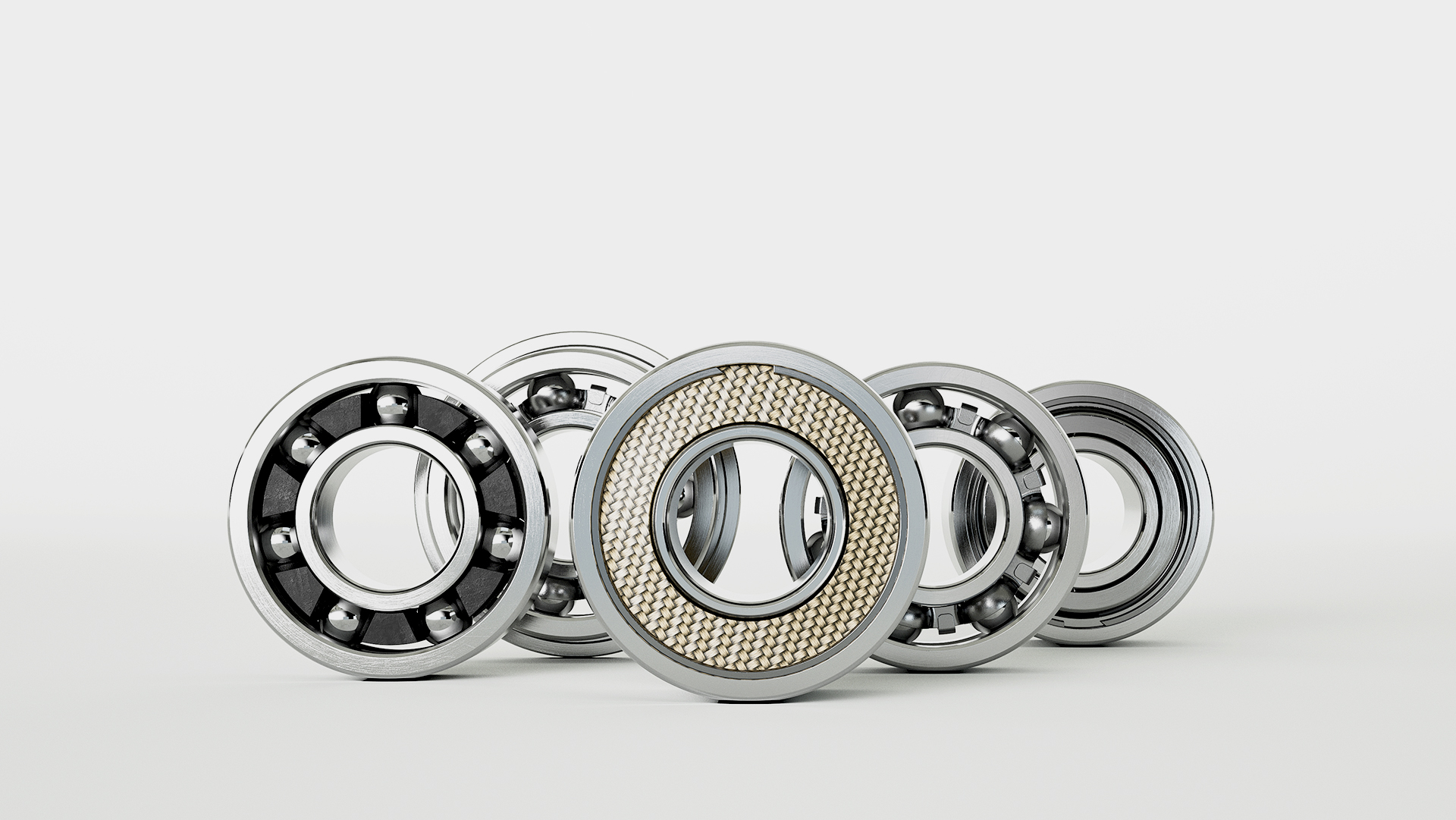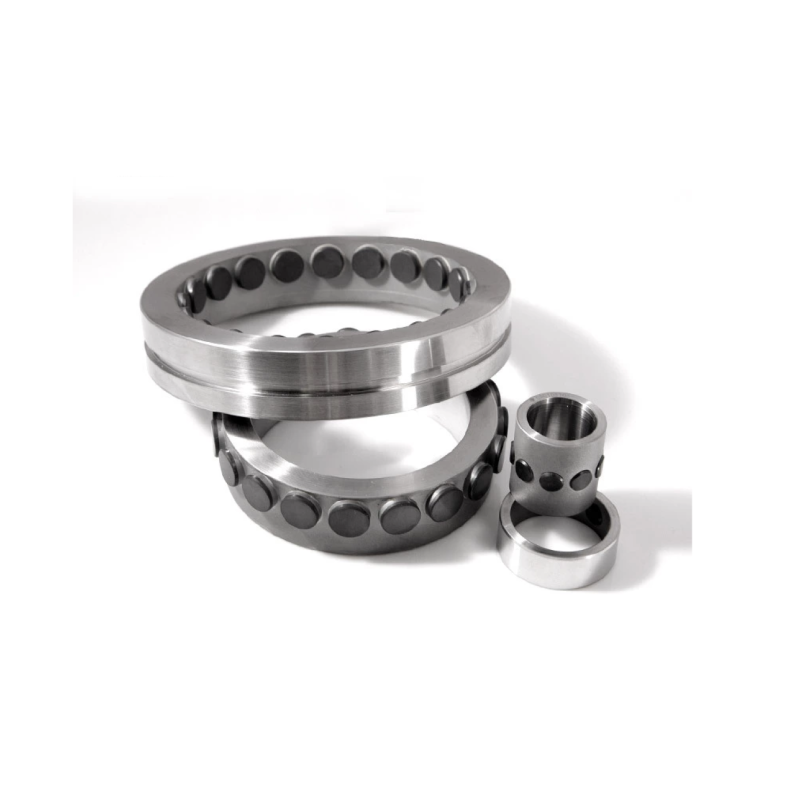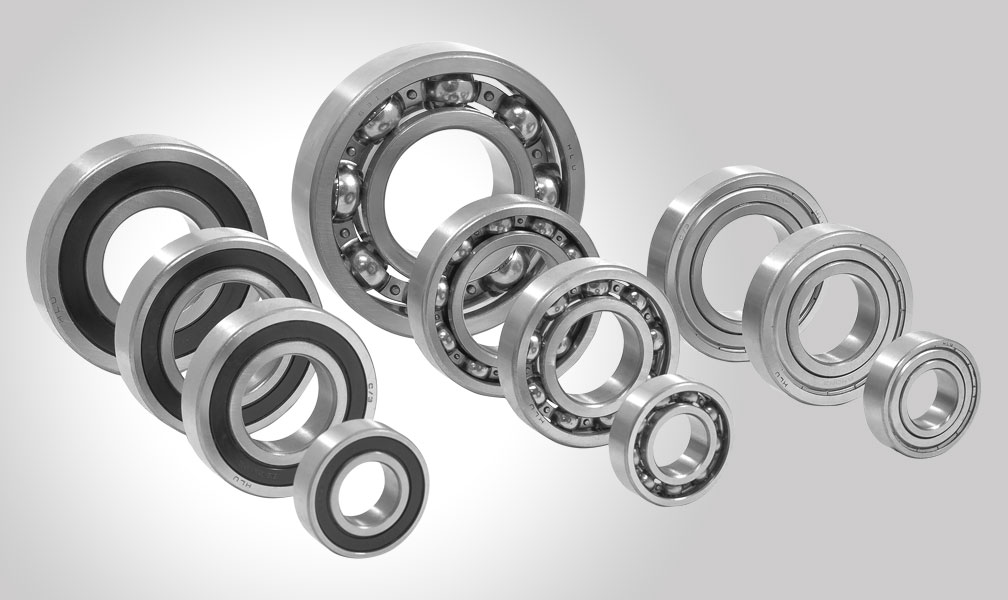How do radial bearings contribute to reduced friction and smooth rotation in machinery?
Radial bearings play a crucial role in reducing friction and promoting smooth rotation in machinery. Their design and construction contribute to minimizing contact between moving parts, optimizing efficiency, and enhancing overall performance. Here is a detailed explanation of how radial bearings achieve reduced friction and smooth rotation:
1. Rolling Elements:
Radial bearings typically incorporate rolling elements, such as balls or rollers, between the inner and outer races. These rolling elements reduce friction compared to sliding contact between surfaces. As the bearing rotates, the rolling elements roll instead of slide, resulting in lower frictional forces and reduced energy loss. The rolling action of the elements contributes to smoother rotation and improved efficiency.
2. Lubrication:
Lubrication is essential for reducing friction and ensuring smooth rotation in radial bearings. Lubricants, such as oils or greases, are used to create a thin film between the rolling elements and raceways. This lubricating film separates the surfaces, minimizing direct contact and friction. The lubricant also helps to dissipate heat generated during operation, preventing excessive temperature rise and potential damage to the bearing. Proper lubrication is critical to maintaining low friction and promoting smooth rotation in radial bearings.
3. Bearing Clearance and Preload:
The clearance or preload adjustment in radial bearings also contributes to reduced friction and smooth rotation. Bearing clearance refers to the intentional space left between the rolling elements and raceways, allowing for thermal expansion and accommodating operating conditions. Adequate clearance ensures that the bearing components can move freely without excessive interference, minimizing friction. On the other hand, preload is a controlled axial force applied to eliminate clearance and maintain a slight internal load on the bearing. Preload helps to reduce internal clearances, improve stiffness, and minimize any potential play or vibration, resulting in smoother rotation.
4. Bearing Material and Surface Finish:
The choice of bearing material and surface finish significantly impacts friction and smooth rotation. Radial bearings are commonly made from materials such as steel, ceramic, or polymer composites. These materials offer excellent hardness, wear resistance, and low friction characteristics. Additionally, the surfaces of the bearing components undergo precise machining and finishing processes to achieve smoothness and minimize surface irregularities. The combination of suitable materials and high-quality surface finishes promotes reduced friction and smooth rotation in radial bearings.
5. Bearing Design and Internal Geometry:
The design and internal geometry of radial bearings are optimized to minimize friction and promote smooth rotation. Factors such as the number and size of rolling elements, the contact angle, and the curvature of the raceways are carefully engineered to ensure proper load distribution and minimize stress concentrations. Well-designed bearing cages also help maintain the correct spacing and alignment of the rolling elements, reducing friction and ensuring smooth rotation. The overall design and geometry of radial bearings are crucial for achieving optimal performance and minimizing frictional losses.
6. Precision Manufacturing:
Radial bearings are manufactured with high precision to achieve tight tolerances and minimize variations in dimensions. Precision manufacturing processes, such as grinding and superfinishing, ensure that the bearing components have accurate shapes and smooth surfaces. This precision manufacturing contributes to reduced friction and smooth rotation by minimizing irregularities and imperfections that can cause excess friction or vibration.
In summary, radial bearings contribute to reduced friction and smooth rotation in machinery through the use of rolling elements, proper lubrication, optimized bearing clearance or preload, suitable materials and surface finishes, well-engineered designs, and precision manufacturing. These factors work together to minimize contact, reduce frictional forces, and ensure efficient and reliable operation of machinery and equipment.
What are the potential challenges or limitations of using radial bearings in specific applications?
Radial bearings, like any other mechanical component, have certain challenges and limitations that should be considered when selecting and using them in specific applications. Understanding these potential limitations is crucial for ensuring the optimal performance and reliability of radial bearings. Here’s a detailed explanation of the potential challenges or limitations of using radial bearings:
1. Load Capacity:
Radial bearings have a specific load capacity, which is determined by their design, size, and material. Exceeding the load capacity can lead to premature wear, excessive heat generation, and ultimately bearing failure. It is important to accurately calculate and apply the appropriate load conditions to ensure that the radial bearing can handle the expected loads in the specific application. In high-load applications, alternative bearing types, such as thrust bearings or angular contact bearings, may be more suitable.
2. Speed Limitations:
Radial bearings have speed limitations that are determined by factors such as bearing size, design, lubrication, and operating conditions. Operating at speeds beyond the recommended limits can result in increased friction, heat generation, and potential bearing failure. It is important to consider the rotational speed requirements of the application and select bearings that can operate within the specified speed range. In high-speed applications, specialized high-speed bearings or alternative bearing types may be necessary.
3. Temperature Constraints:
The operating temperature range of radial bearings should be taken into account when selecting them for specific applications. Excessive temperatures can cause changes in bearing dimensions, material degradation, lubrication breakdown, and reduced bearing life. High-temperature applications may require bearings with heat-resistant materials or additional cooling measures, while low-temperature applications may require special lubricants that can withstand cold environments.
4. Environmental Factors:
Radial bearings can be affected by environmental factors such as moisture, dust, chemicals, and corrosive substances. These factors can accelerate wear, corrosion, and contamination, leading to reduced bearing performance and premature failure. It is important to assess the operating environment and select appropriate sealing solutions, protective coatings, or bearing materials that can withstand the specific environmental conditions.
5. Misalignment:
Radial bearings require proper alignment to function optimally. Misalignment can result in increased stresses, uneven load distribution, and accelerated wear. It is crucial to ensure accurate alignment during installation and consider the potential misalignment factors in the application design. In some cases, self-aligning bearings or specialized bearing arrangements may be necessary to accommodate misalignment.
6. Maintenance Requirements:
Radial bearings require regular maintenance to ensure their optimal performance and longevity. This includes proper lubrication, periodic inspections, and timely replacement of worn or damaged components. In applications where maintenance is challenging or access is limited, alternative bearing types or maintenance-free bearing solutions may be more suitable.
7. Cost Considerations:
The cost of radial bearings can vary depending on factors such as bearing type, size, quality, and manufacturer. In some cases, specialized bearings designed for specific applications may be more expensive. It is important to balance the performance requirements with the available budget to select bearings that provide the desired level of performance and reliability at a reasonable cost.
8. Application-Specific Considerations:
Each application may have unique requirements, challenges, or limitations that should be taken into account when selecting radial bearings. Factors such as vibration, shock loads, space constraints, noise tolerance, and regulatory compliance may influence the choice of bearings. It is important to consider these application-specific factors and consult with bearing manufacturers or industry experts to ensure the selected bearings can meet the specific requirements.
By considering these potential challenges and limitations, it is possible to make informed decisions regarding the selection, implementation, and maintenance of radial bearings in specific applications. Proper assessment of load capacity, speed limitations, temperature constraints, environmental factors, alignment, maintenance requirements, cost considerations, and application-specific factors can help optimize the performance and reliability of radial bearings in various industrial and mechanical systems.
How do innovations and advancements in radial bearing technology impact their use?
Innovations and advancements in radial bearing technology have a significant impact on their use in various industries and applications. These advancements drive improvements in performance, reliability, efficiency, and versatility of radial bearings. Here’s a detailed explanation of how innovations and advancements in radial bearing technology impact their use:
1. Enhanced Performance:
Advancements in radial bearing technology lead to improved performance characteristics. This includes increased load capacities, higher rotational speeds, reduced friction, and enhanced stiffness. These improvements allow radial bearings to handle more demanding loads and operate in high-speed applications more effectively. Enhanced performance enables the use of radial bearings in a wider range of industrial applications, contributing to increased efficiency and productivity.
2. Extended Service Life:
Innovations in bearing materials, lubrication systems, and surface treatments result in extended service life for radial bearings. New materials with superior wear resistance and corrosion resistance properties allow bearings to withstand harsh environments and reduce the risk of premature failure. Advanced lubrication techniques, such as self-lubricating or solid lubricant coatings, minimize friction and wear, further prolonging the bearing’s service life. The ability of radial bearings to operate reliably for longer periods translates into reduced maintenance requirements and downtime.
3. Improved Reliability:
Advancements in radial bearing technology enhance their overall reliability. New designs and manufacturing techniques ensure consistent quality, dimensional accuracy, and precise tolerances, resulting in reliable performance under varying operating conditions. The use of advanced simulation and testing methods enables better prediction and understanding of bearing behavior, allowing for optimized designs and improved reliability. Enhanced reliability reduces the risk of unexpected bearing failures, which can lead to costly downtime and equipment damage.
4. Higher Efficiency:
Innovations in radial bearing technology contribute to higher efficiency in mechanical systems. Reduced friction and improved lubrication techniques minimize energy losses within the bearing, resulting in improved overall system efficiency. Bearings with lower friction help reduce power consumption and improve energy utilization, making them particularly beneficial in applications where energy efficiency is a priority, such as electric motors or automotive drivetrains.
5. Miniaturization and Compact Designs:
Advancements in radial bearing technology enable the development of smaller and more compact bearing designs. This is particularly important in industries where space constraints are a significant consideration. Miniaturized bearings allow for the design of smaller and lighter equipment without compromising performance. They find applications in industries such as aerospace, robotics, medical devices, and electronics, where size and weight reduction are crucial.
6. Specialized Applications:
Innovations in radial bearing technology have led to the development of specialized bearings tailored for specific applications. For example, advancements in bearing materials and designs have resulted in bearings capable of operating in extreme temperature or high-vibration environments. Specialized bearings designed for specific industries, such as the food and beverage or pharmaceutical sectors, meet stringent regulatory requirements regarding hygiene and contamination prevention. These specialized bearings expand the range of applications where radial bearings can be used effectively.
7. Integration with Sensor Technologies:
Advancements in sensor technologies have facilitated the integration of condition monitoring and predictive maintenance capabilities into radial bearings. Bearings equipped with sensors can provide real-time data on factors such as temperature, vibration, and load conditions. This allows for proactive maintenance and early detection of potential issues, enabling timely interventions to prevent unplanned downtime and optimize equipment performance.
8. Cost Optimization:
While innovations and advancements in radial bearing technology often involve initial investments in research and development, they can lead to long-term cost savings. Improved performance, extended service life, and reduced maintenance requirements result in lower operational costs over the bearing’s lifetime. Additionally, advancements in manufacturing processes and economies of scale may contribute to more affordable bearing options, making advanced radial bearing technology accessible to a wider range of applications.
By continually pushing the boundaries of radial bearing technology, innovations and advancements have a profound impact on their use across various industries. Enhanced performance, extended service life, improved reliability, higher efficiency, miniaturization, specialized applications, integration with sensor technologies, and cost optimization are some of the key benefits that result from these advancements. As a result, engineers and designers have access to a wider range of bearing options to meet the evolving needs of modern industrial applications.
editor by CX 2024-05-08




